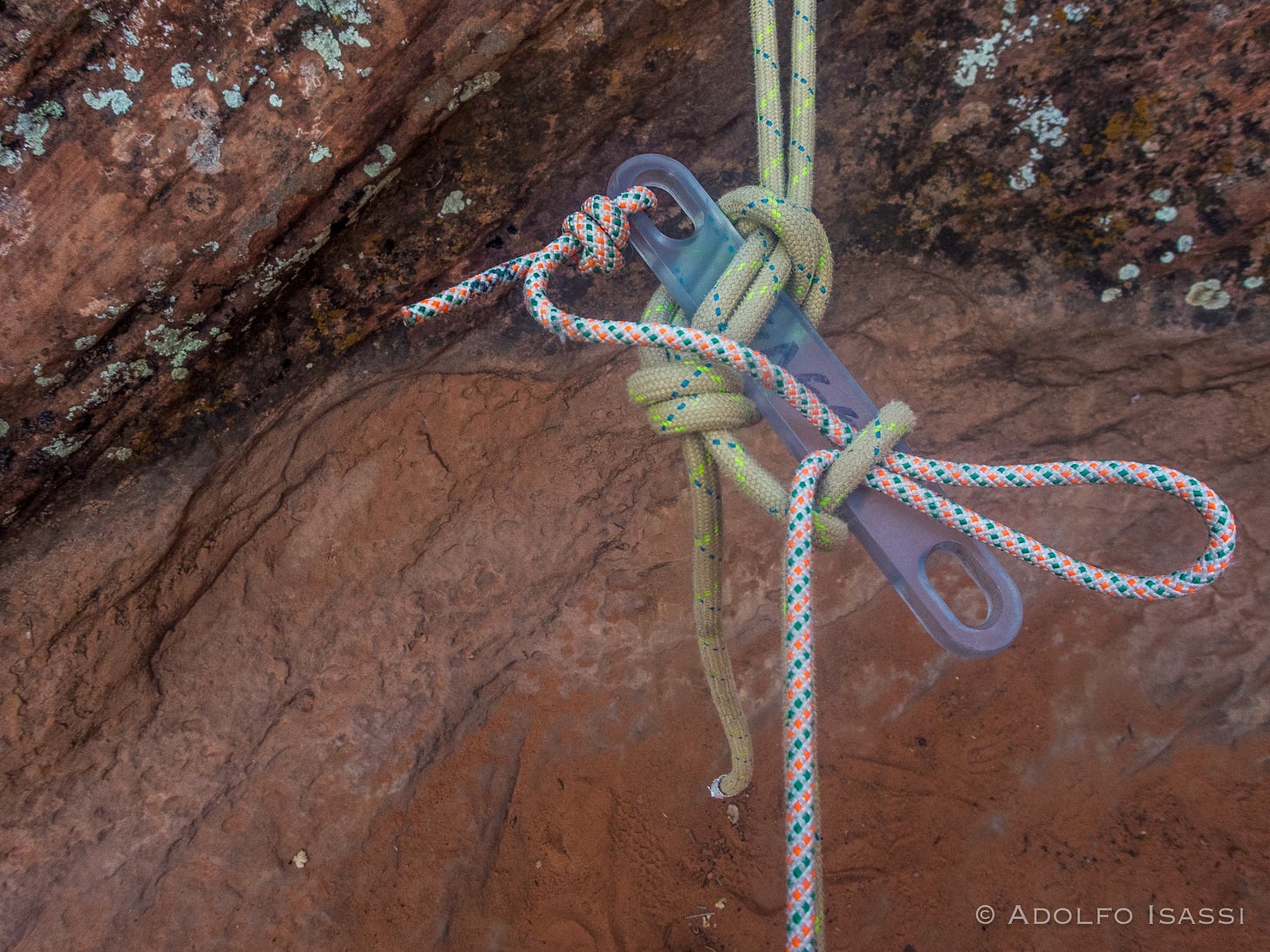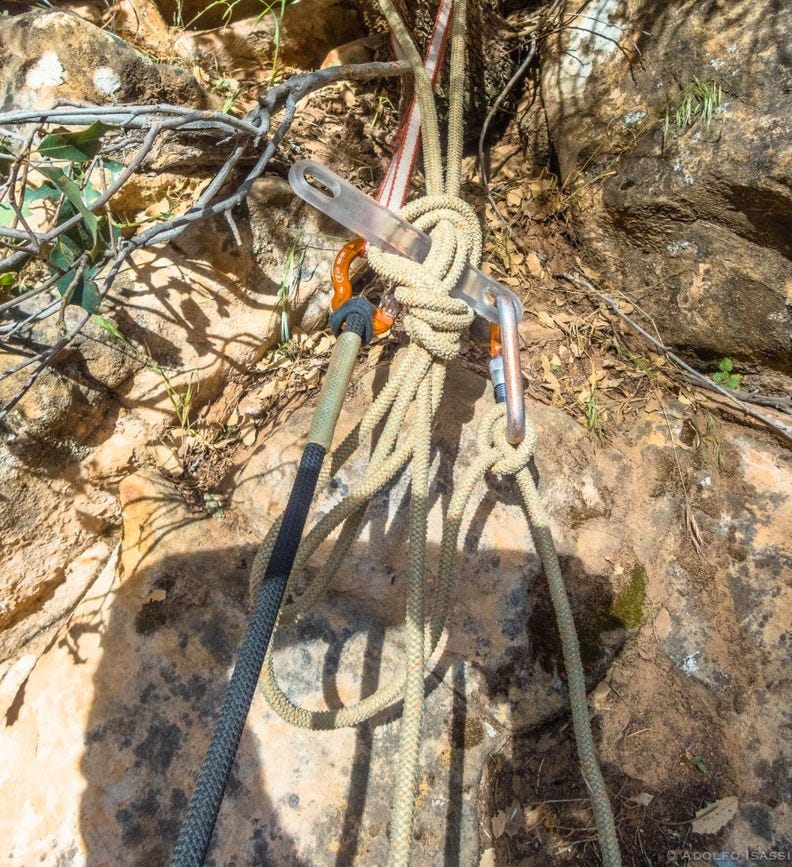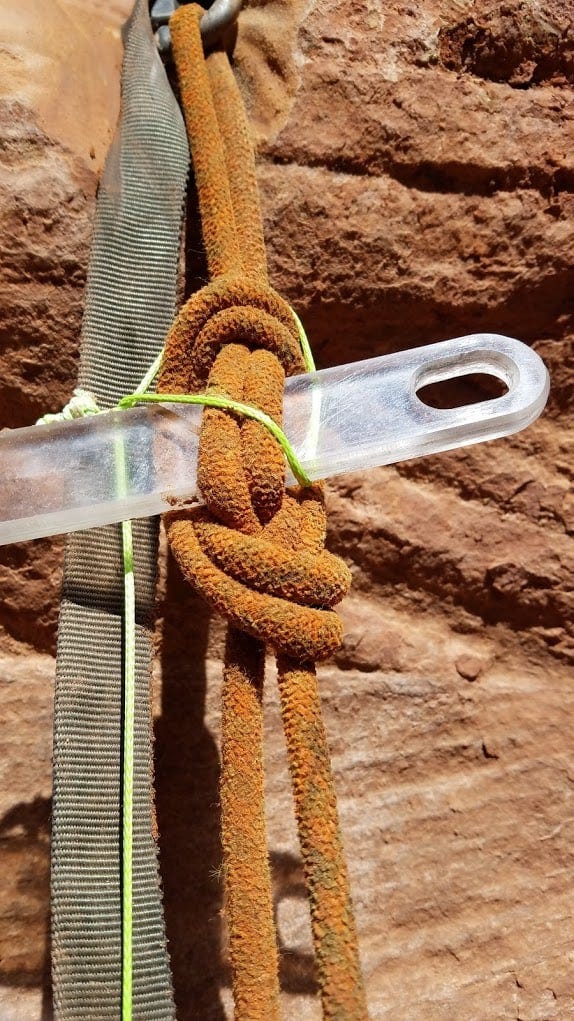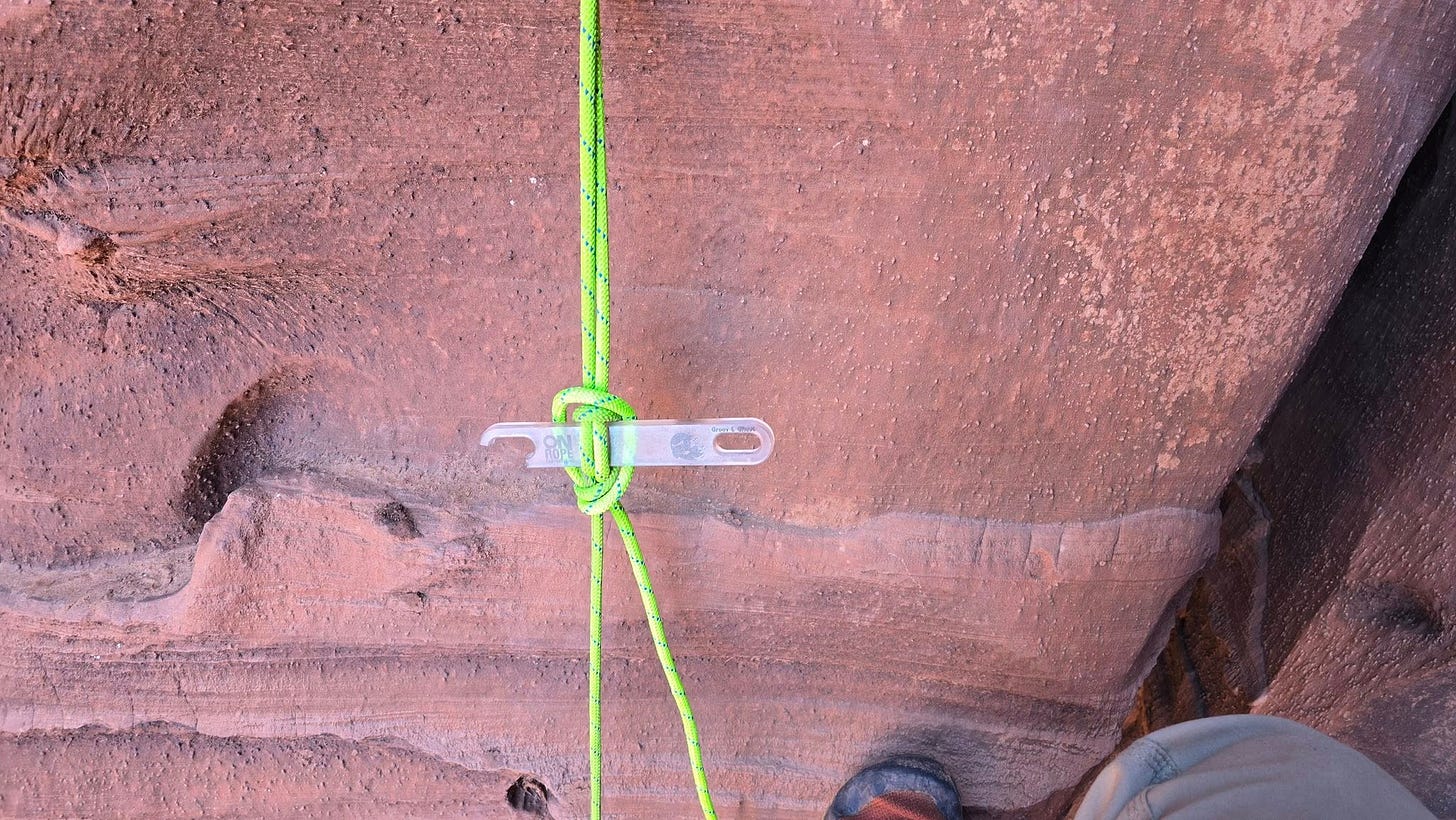Why so popular
Toggle stick (known by a name brand "fiddle stick") is a popular type of TR (Transient Rigging/ghosting) in the American canyoneering communities. Not sure if the popularity is due to the knot simplicity, or the fact that you need one extra piece of gear, or due to newcomers emulating what they read and see online.
What I don't like
Like other types of Transient Rigging, toggle-stick rigging is static rigging, meaning, you can not release and lower the system while under load, making indirect rescues and setting rope length not an option. Also, compared to other TR options, like the CEM, Macrame, MexiKnotl, etc) Toggle Sticks do not have a staged-release, meaning they disengage in one step. Other systems disengage in several steps. Because the extra gear, the lack of rescue options, and the lack of a staged-release, toggle sticks are not my favorite Transient Rigging option.
What I do like
But during explorations of undocumented canyons, we come across situations somewhat common in certain types of canyons in the Colorado Plateau: A multi staged rappel interrupted by hanging potholes full of rope-catching features. Any ghosting system that drags hardware or rope loops/bight has a higher chance of getting stuck. So in these cases, we switch to a toggle-stick / tails up system.
Wait, tails up = no hardware dragging?
Well, not quite. You still will drag that plastic stick down. We almost got that stick stuck several times. One thing that I learned in the "wild" by one early mentor was the "rodeo flick" to get plastic sticks and cleated ropes unstuck.
Wait, what about Virtual Toggles?
Virtual toggle offers a total hardware free, clean recovery of both the rappel rope and pull cord. The catch? Puts the user back into a situation where rope dexterity and nauseance implementation is needed to rig it. Not a solution for "simple-is-safer” types.
Wait, what about a simple well placed bolt?
Well yes, in the end, if you want to solve complex risk mitigation, all that complexity needs to be addressed somehow, either by a proficient rigger doing TR or TRR...or by a proficient bolter.
What scales better?
What sounds like a safer, realistic alternative? Asking all new people entering the sport to learn how to be proficient at ringg Transient Rigging and Self Rescue? Or having a few proficient bolters equipping routes? Transient Rigging is a very efficient way to explore canyons. The risks of Transient Rigging can be addressed by other advanced complementary mitigation and rescue skills. Skills that many people do not have.
Toggle Gallery
Half Hitch Lock: Method to add a staged release for a toggle
Braid Lock: Method to add a staged release for a toggle
No pull cord needed for a “Mid Rope Toggle”
Using toggles in rapides may result is twists that tangle the pull side: Rope Stuck (photo credit Jarred Hillhouse)
I’ve seen this failure to recover rope happen a couple of times. Repeated hits during falls weakens that area. Pull cord just pulls down leaving the stick in place. (photo credit K&S)








